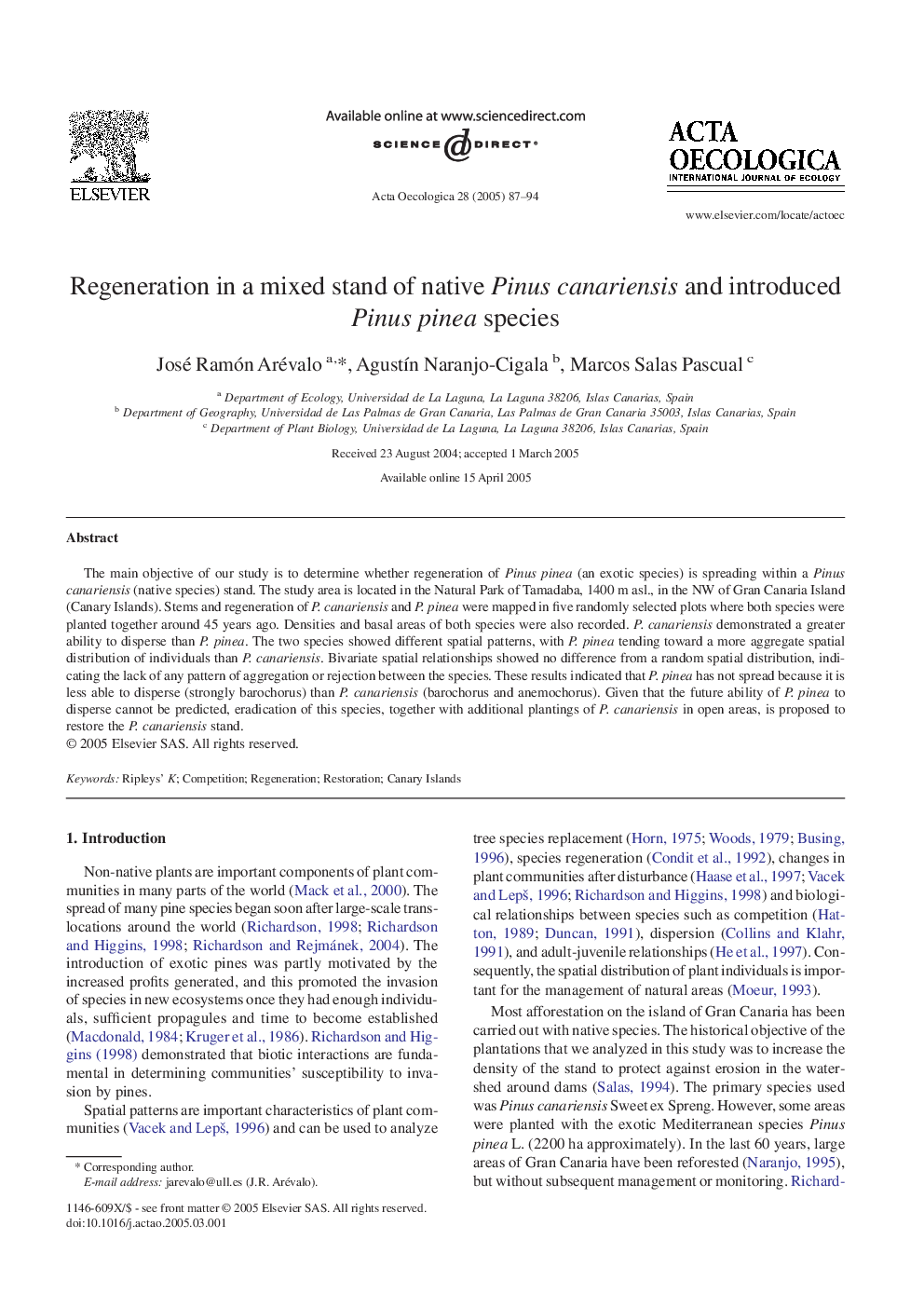| Article ID | Journal | Published Year | Pages | File Type |
|---|---|---|---|---|
| 9444996 | Acta Oecologica | 2005 | 8 Pages |
Abstract
The main objective of our study is to determine whether regeneration of Pinus pinea (an exotic species) is spreading within a Pinus canariensis (native species) stand. The study area is located in the Natural Park of Tamadaba, 1400Â m asl., in the NW of Gran Canaria Island (Canary Islands). Stems and regeneration of P. canariensis and P. pinea were mapped in five randomly selected plots where both species were planted together around 45Â years ago. Densities and basal areas of both species were also recorded. P. canariensis demonstrated a greater ability to disperse than P. pinea. The two species showed different spatial patterns, with P. pinea tending toward a more aggregate spatial distribution of individuals than P. canariensis. Bivariate spatial relationships showed no difference from a random spatial distribution, indicating the lack of any pattern of aggregation or rejection between the species. These results indicated that P. pinea has not spread because it is less able to disperse (strongly barochorus) than P. canariensis (barochorus and anemochorus). Given that the future ability of P. pinea to disperse cannot be predicted, eradication of this species, together with additional plantings of P. canariensis in open areas, is proposed to restore the P. canariensis stand.
Related Topics
Life Sciences
Agricultural and Biological Sciences
Ecology, Evolution, Behavior and Systematics
Authors
José Ramón Arévalo, AgustÃn Naranjo-Cigala, Marcos Salas Pascual,
